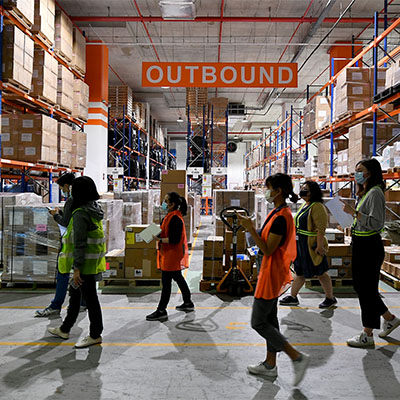SOUTH-East Asia has lagged behind the rest of Asia in the digitalisation of its economies. However, with recent improvements in infrastructure/logistics, mobile networks and payments and the Covid-19 crisis forcing people to stay at home and shop online, Asean is likely to see significant inflection in digitalisation over the next few years.
This change will create opportunities for new players and likely disrupt existing ones. Historically, digitalisation of economies has followed a fairly predictable path: consumers buy more online, socialise more online and pay for more products online. What is different is how consumers access each of these services.
We see two distinct models:
- Western/US style . . . This is where each product has its own individual app for consumers to download; and
- Chinese style . . . This is the Super App, where consumers can access all these different services from the one platform.
Effectively, Super Apps become the gateways to the consumer; hence, we think Asean will follow the Chinese example, where significant value can be generated for the apps that establish themselves as these gateways. The leading contenders in this space include: Grab, Gojek, and Sea.
The size of the Super App market is growing rapidly; we forecast that across Asean it is currently worth ~US$4 billion in revenue, but by 2025 we expect it to be US$23 billion. Driven by five key revenue drivers:
- Ridesharing
- Food delivery
- Fintech
- Digital banking
- e-Commerce
The important attribute of all of these online activities is that they create strong engagement, and this engagement means regular interaction with the app all through the day.
One of the key differences between the Asean Super App ecosystem and China's is the lack of social or messaging. This is simply because there are no strong local social or messaging platforms; rather, this space is dominated by Facebook and WhatsApp.
Profitability of these platforms has always been debated, and what we have found is that, within ride sharing, it takes an average of 10 years before this can be achieved. Food delivery takes even longer at 11 years, and only e-commerce can expect profitability to be achieved 5 to 7 years after launch. But the key point here is that, as markets become more rational and players continue develop greater scale, profitability can be achieved.
China once again provides the best example where scale and a digital savvy consumer have allowed the Super App industry to generate healthy returns on investment rising to an expected ~20 per cent over the next couple of years.
This then begs an interesting question . . . how much more capital needs to be invested in Asean before these returns can be achieved. The answer . . . potentially double what has already been invested.
Over the 2016-19 period, US$43 billion has been invested in Super App across Asean, but this is dwarfed by the US$257 billion that has been invested in China over the 2010-19 period. Looking at this on a per population comparison, Asean has received ~US$75 of investment per person vs China at US$184 per person. This would imply a potential doubling of the investment in the sector.
Whilst this is a simplistic measure, it does highlight the need for further investment. As a result, the winners in the Asean Super App need access to capital, and this is why we think the established players Grab, Gojek and Sea are well positioned to capitalise on this opportunity.
While Super Apps grow, their use will provide opportunities for some sectors but disruption for others. Over the coming years, we see banking establishing itself as the key battleground for Super Apps. Although fintech players initially represent a small share of the US$23 billion Super App opportunity, this segment could be the most disruptive. The reason: Online payments provide a likely entry point for other services, including insurance, investments and remittance.
Once Super Apps enter the payments market, with the right licences, they could build a deposit base that would allow them to use their strengths in customer intelligence to build a loan book.
However, banks will likely resist attempts by gateway products to access valuable deposits, as they could lose lucrative fees. If banks win this battle, they will hold on to low-cost deposits, and it will be difficult for Super Apps to break into digital banking.
Where banks are slow to react, or have left large parts of the potential banking market untapped, new digital banks have more scope to break in. Banks in Singapore, Malaysia and Thailand have potentially better moats in place to protect their interests, in our view, than those in the Philippines and Indonesia.
The writer is head of Asean Technology/Media/Telecom Research, Morgan Stanley
© 2020 Singapore Press Holdings
This article was written by Mark Goodridge from The Singapore Business Times and was legally licensed through the NewsCred publisher network. Please direct all licensing questions to legal@newscred.com.







